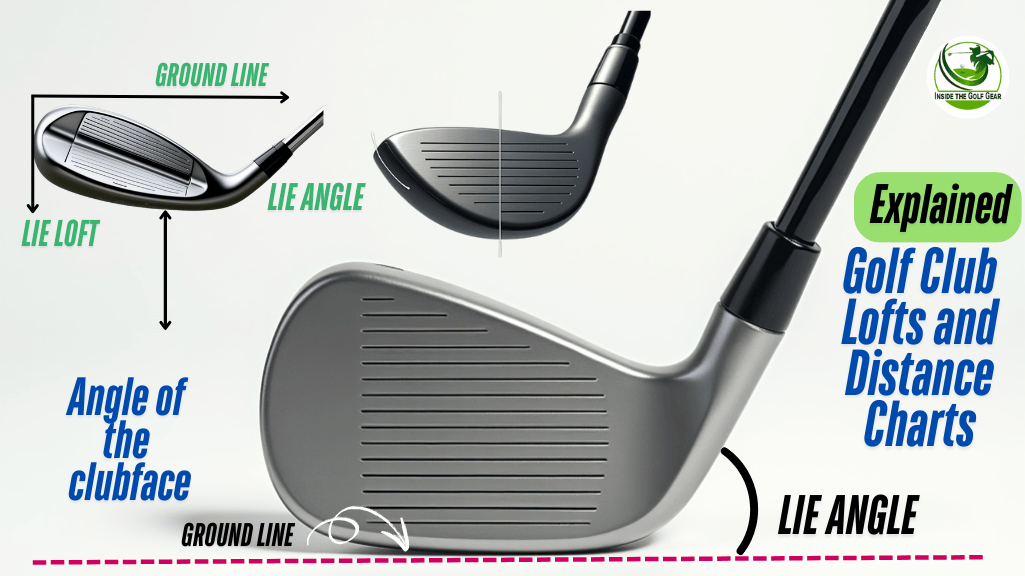The Secret Benefits- Golf club lofts and distance charts
Golf can feel overwhelming at first, especially when faced with terms like “loft” and “distance charts.” I remember my early days of golf when I couldn’t figure out why my shots were inconsistent—turns out, understanding golf club lofts was a game-changer.
Loft isn’t just a technical term; it’s the secret sauce that connects your swing to the ball’s trajectory and distance. This guide will walk you through everything you need to know about Golf Club Lofts and Distance Charts, helping you choose the right clubs, improve your game, and avoid common mistakes. So, grab your clubs, and let’s dive into this together!
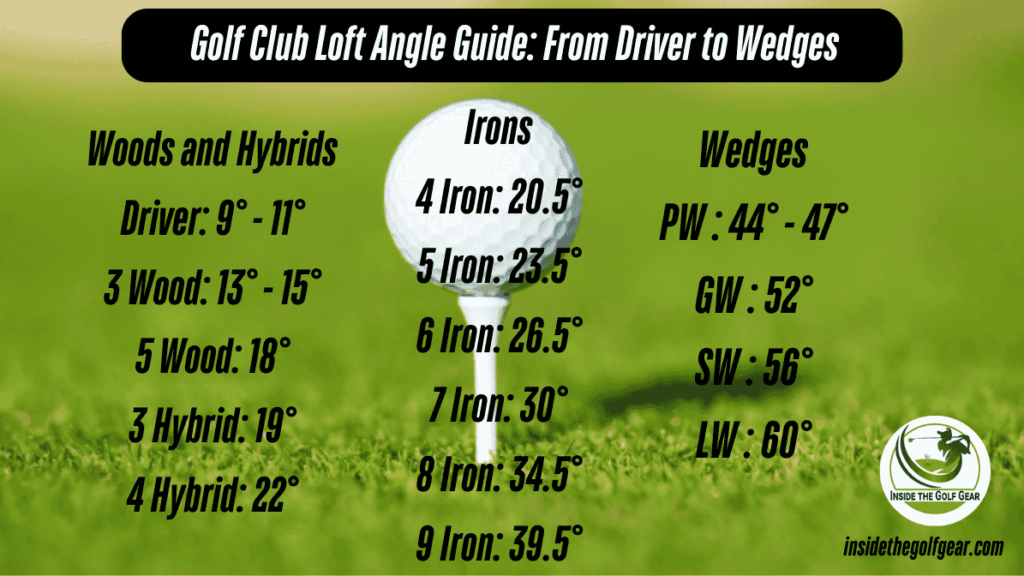
As I got deeper into the sport, I realized that understanding what loft means in golf is like unlocking a secret weapon—it’s the foundation for controlling your ball’s height, spin, and distance.
So, what exactly is loft? In simple terms, it’s the angle of the clubface when it’s placed on the ground, relative to a vertical plane. Or Loft is simply the angle of the clubface. It controls how high or low the ball will go and how far it will travel. The higher the loft, the higher the ball flies, but it won’t travel as far. A lower loft will send the ball further, but the ball stays closer to the ground.
Imagine holding a wedge and noticing how the face points more toward the sky compared to a driver, which has a much flatter face. That angle determines how high your ball will fly and how far it will travel. High-lofted clubs, like wedges, are designed for shorter, higher shots, while low-lofted clubs, like drivers, help you cover maximum distance with a lower trajectory.
Let’s break it down with examples:
- Drivers have low loft (around 9-13 degrees). These clubs are designed for distance. The ball goes far but doesn’t climb very high.
- Wedges, on the other hand, have high loft (48-60 degrees). These are built for accuracy and control. The ball goes up into the air and lands softly.
How Loft Works
When you hit a golf ball, the loft angle determines two key things:
- The height the ball will fly
- How much spin the ball will have
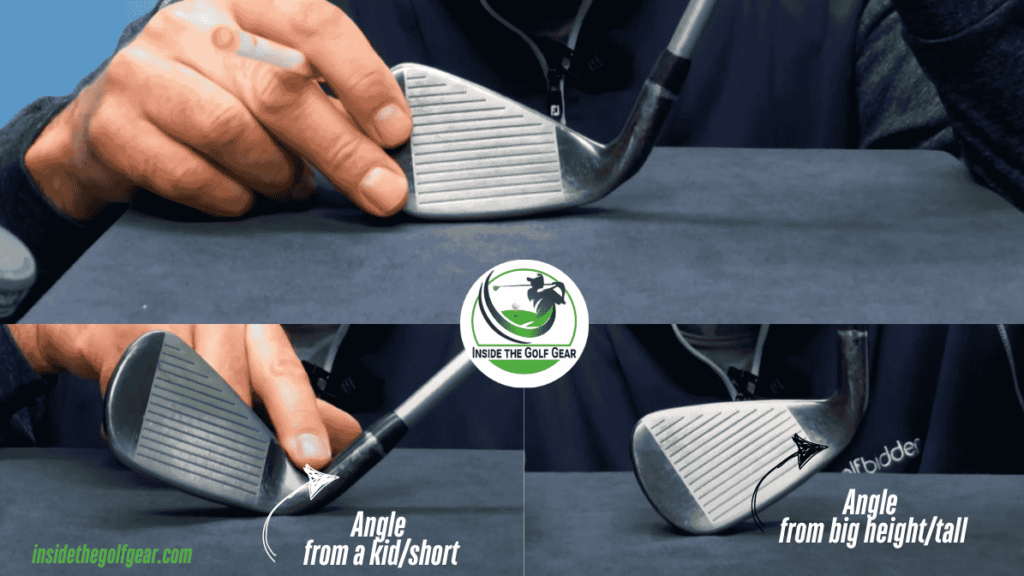
Understanding Golf Club Loft Angles
Loft angles indicate how high the clubface is tilted. This tilt affects how high and far the ball travels. Here’s a quick breakdown of typical loft angles for various clubs:
- Driver: 9 to 11 degrees
- 3 Wood: 13 to 15 degrees
- 5 Wood: About 18 degrees
- Hybrids: Between 17 and 22 degrees
- Irons:
- 4 Iron: 24 degrees
- 5 Iron: 27 degrees
- 6 Iron: 30 degrees
- 7 Iron: 34 degrees
- 8 Iron: 38 degrees
- 9 Iron: 41 degrees
- Wedges:
- Pitching Wedge: 44 to 48 degrees
- Sand Wedge: 54 to 58 degrees
- Lob Wedge: 58 to 64 degrees
How Loft Affects Your Game
Understanding loft can drastically change how you approach each shot. For instance, when I was learning to hit my approach shots, I noticed my 9-iron was more forgiving than my 8-iron. It helped me achieve a higher trajectory, allowing my ball to land softly on the green.
Here’s how loft impacts your game:
- Higher Lofted Clubs:
- Produce higher shots.
- Ideal for short approaches and shots over obstacles.
- Lower Lofted Clubs:
- Generate lower, longer shots.
- Best for driving the ball off the tee.
- Higher Lofted Clubs:
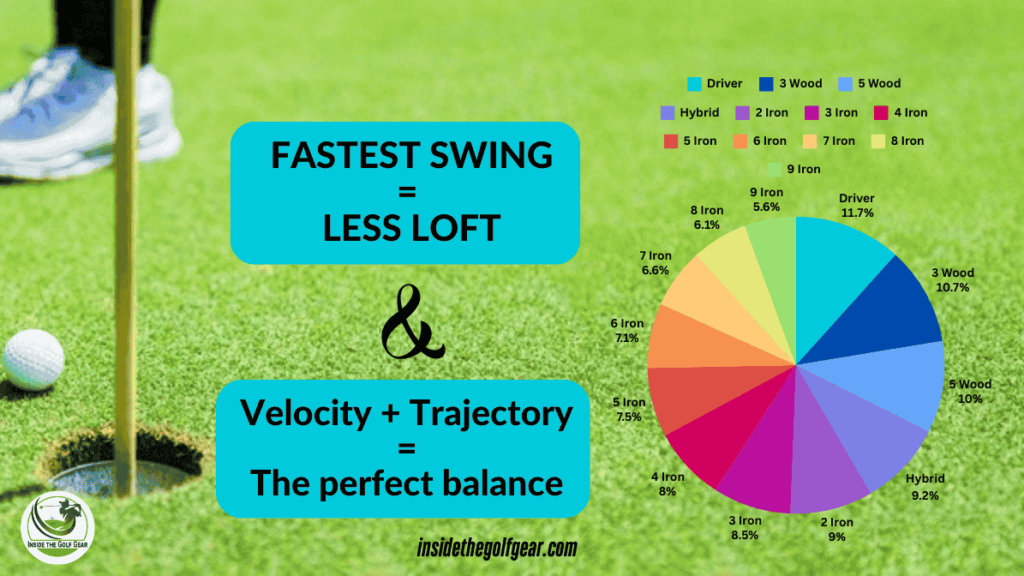
Key Insights to Remember:
- Higher loft = higher trajectory: This is crucial for stopping the ball quickly on the green.
- Lower loft = longer distance: Great for tee shots where you want maximum distance.
- Consistency is key: Knowing your club’s loft helps maintain consistent distances for your shots.
Golf Club Lofts and Distance Charts by Age, Gender, and Skill Level
Here’s everything you need to know about golf club lofts and distance charts, broken down into age, gender, and skill level so you can find what’s relevant to you.
1. Average Golf Club Distance by Age
| Club Types | 20s to 30s (Young) | 40s to 50s (Middle) | 60s and Older |
| Driver | 230-280 | 210-250 | 180-230 |
| 3-Wood | 210-240 | 190-220 | 170-210 |
| 5-Wood | 200-230 | 180-210 | 160-200 |
| Hybrid | 190-220 | 170-200 | 150-190 |
| 2-Iron | 195-225 | 175-205 | 155-190 |
| 3-Iron | 180-210 | 160-190 | 140-175 |
| 4-Iron | 170-200 | 150-180 | 130-160 |
| 5-Iron | 160-190 | 140-170 | 120-150 |
| 6-Iron | 150-180 | 130-160 | 110-140 |
| 7-Iron | 140-170 | 120-150 | 100-130 |
| 8-Iron | 130-160 | 110-140 | 90-120 |
| 9-Iron | 120-150 | 100-130 | 80-110 |
| Pitching Wedge | 110-140 | 90-120 | 70-100 |
| Gap Wedge | 90-120 | 80-110 | 60-90 |
| Sand Wedge | 80-110 | 70-100 | 50-80 |
| Lob Wedge | 70-100 | 60-90 | 40-70 |

As we age, our swing speed can decrease, impacting how far we hit the ball. For example:
A younger player (under 30) may hit a driver around 250 yards.
- Driver: 230-280 yards
- 5-iron: 170-200 yards
- 9-iron: 130-150 yards
Distance for Middle-Aged Golfers (40s to 50s):
- Driver: 210-250 yards
- 5-iron: 150-180 yards
- 9-iron: 110-130 yards
An older player (over 60) might average closer to 200 yards with the same club.
- Driver: 180-230 yards
- 5-iron: 130-160 yards
- 9-iron: 100-120 yards
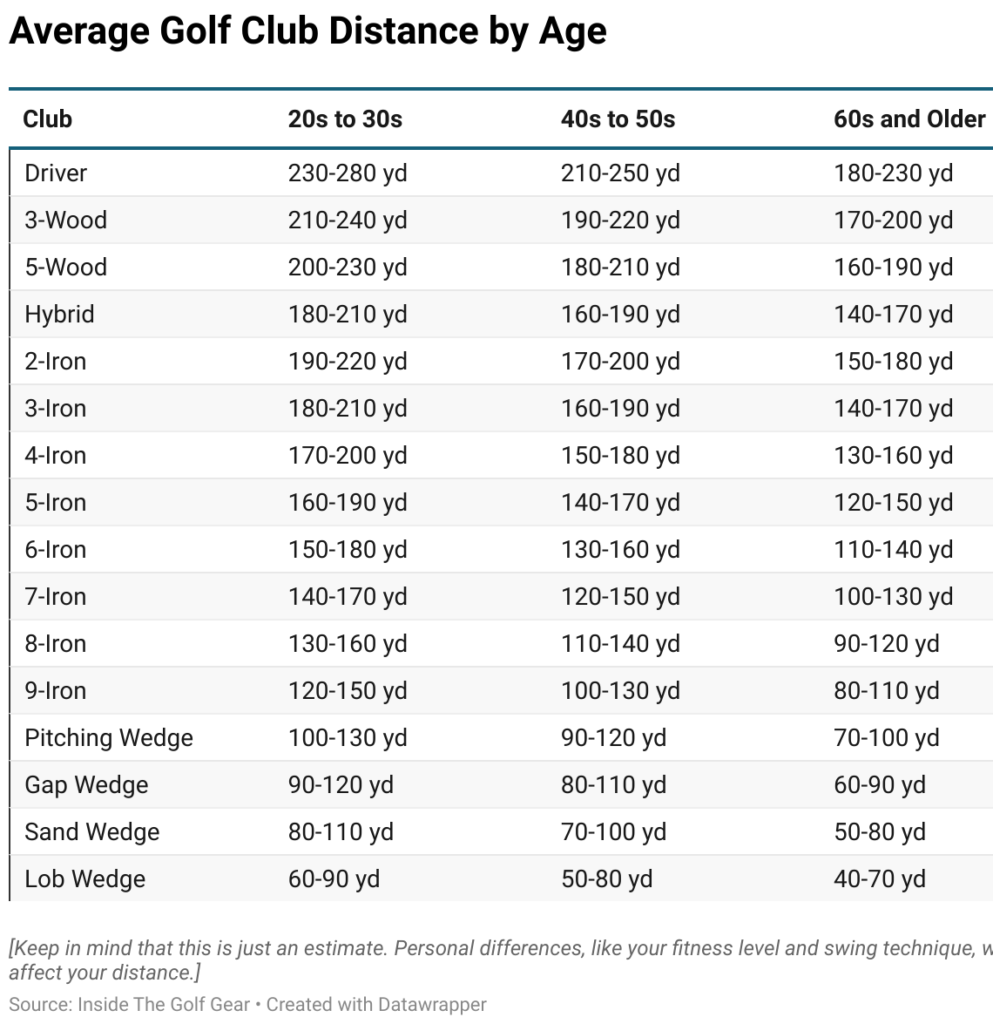
What this means:
- Young golfers have higher swing speeds due to flexibility and power.
- Middle-aged players may see a gradual distance drop.
- Senior golfers often need adjustments in loft or club selection to maintain distance.
👉 Pro Tip: If you’re over 50, consider hybrids instead of long irons—they’re easier to hit and offer more forgiveness.
2. Golf Club Lofts And Distance Charts by Gender

Distance for Male Golfers:
Men generally have higher swing speeds due to differences in muscle mass and strength. As a result, they hit the ball further on average.
- Driver: 230-280 yards
- 5-iron: 170-200 yards
- 9-iron: 130-150 yards
Distance for Female Golfers:
Women typically have lower swing speeds, which means their distances tend to be shorter.
- Driver: 180-230 yards
- 5-iron: 130-160 yards
- 9-iron: 100-120 yards
LPGA Tour Average:
Driver: 220-230 meters
7-iron: 140 meters
Club Type | Avg Distance Men (m) | Avg Distance Women (m) |
Driver | 230-250 | 200-220 |
3 Wood | 210-230 | 180-200 |
5 Wood | 200-210 | 170-180 |
Hybrid | 180-200 | 150-160 |
2 Iron | 180-190 | 150-160 |
3 Iron | 170-180 | 140-150 |
4 Iron | 160-170 | 130-140 |
5 Iron | 150-160 | 120-130 |
6 Iron | 140-150 | 110-120 |
7 Iron | 130-140 | 100-110 |
8 Iron | 120-130 | 90-100 |
9 Iron | 110-120 | 80-90 |
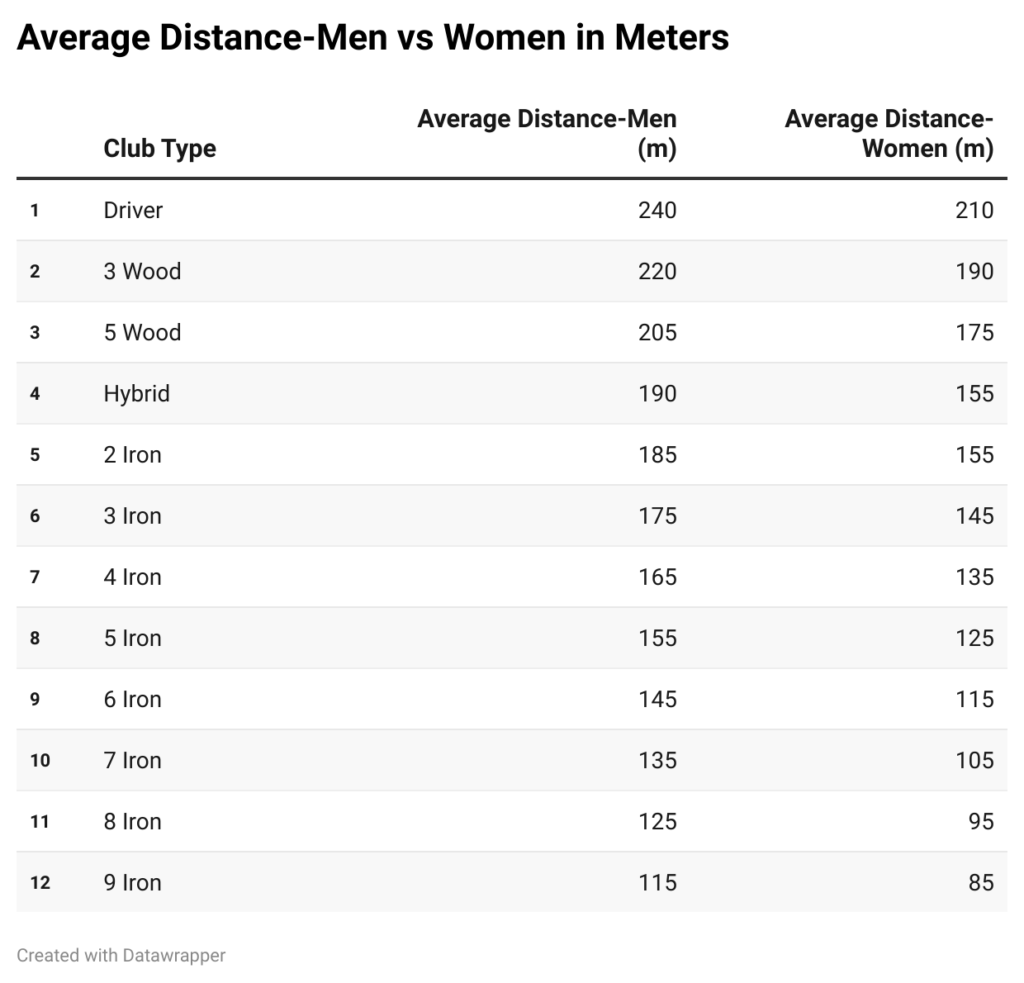
3. Golf Club Lofts and Distance Charts by Skill Level
Distance for Beginners:
Beginners usually have slower swing speeds and less consistency, so their distances will be on the shorter end of the spectrum.
- Driver: 150-200 yards
- 5-iron: 110-140 yards
- 9-iron: 80-100 yards
Distance for Intermediate Golfers:
Intermediate players have better control over their swing speed and consistency, so their distances will improve.
- Driver: 190-240 yards
- 5-iron: 140-170 yards
- 9-iron: 110-130 yards
Distance for Advanced Golfers:
Advanced players generate the fastest swing speeds and the longest distances.
- Driver: 220-270 yards
- 5-iron: 160-200 yards
- 9-iron: 130-150 yards
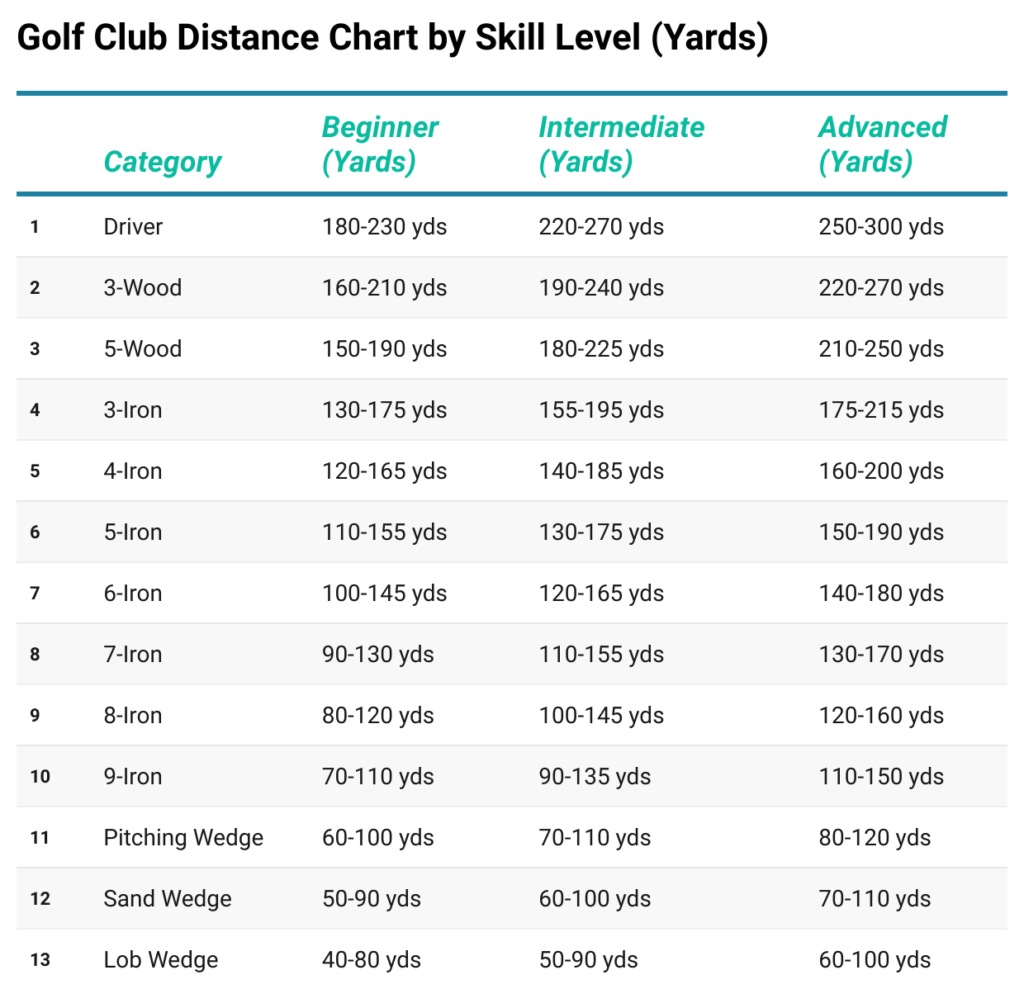
4. Age, Gender, and Skill Level Swing Speed Chart for Golf Clubs
This article will help you understand how club distance changes and how to use that information to your advantage if you’re not sure how far you should hit the ball based on your swing speed.
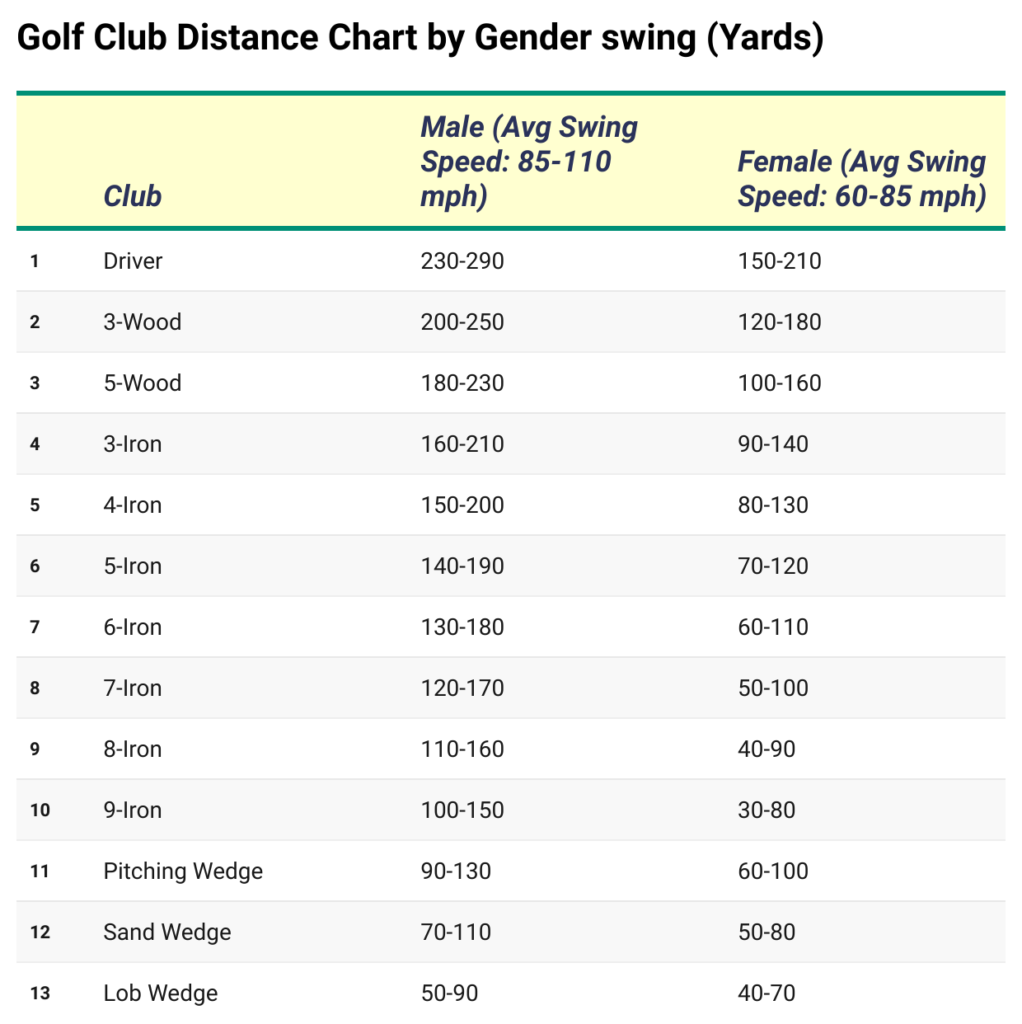
Men
- 20s to 30s: 100-115 mph
- 40s to 50s: 95-105 mph
- 60s and Older: 85-95 mph
Women
- 20s to 30s: 70-85 mph
- 40s to 50s: 65-75 mph
- 60s and Older: 55-65 mph
Below A Table about Golf Club Distance Swing by Gender
Male (85-110 mph Swing Speed) | Female (60-85 mph Swing Speed) | |
Driver | 230-290 | 150-210 |
3-Wood | 200-250 | 120-180 |
5-Wood | 180-230 | 100-160 |
3-Iron | 160-210 | 90-140 |
4-Iron | 150-200 | 80-130 |
5-Iron | 140-190 | 70-120 |
6-Iron | 130-180 | 60-110 |
7-Iron | 120-170 | 50-100 |
8-Iron | 110-160 | 40-90 |
9-Iron | 100-150 | 30-80 |
Pitching Wedge | 90-130 | 60-100 |
Sand Wedge | 70-110 | 50-80 |
Lob Wedge | 50-90 | 40-70 |
Now have a look about Golf Club Distance by Swing Speed & Age
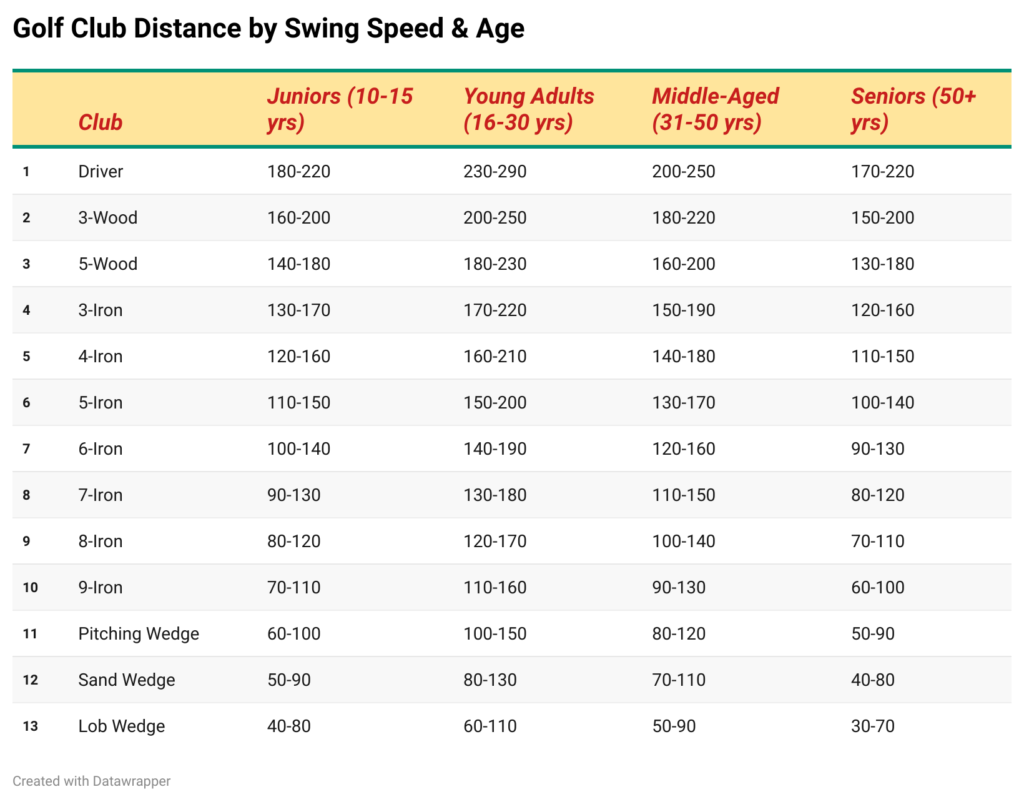
Skill Level Matters! (Beginner, Intermediate, Advanced)
Golf isn’t just about age and gender—your skill level makes a big difference, too!
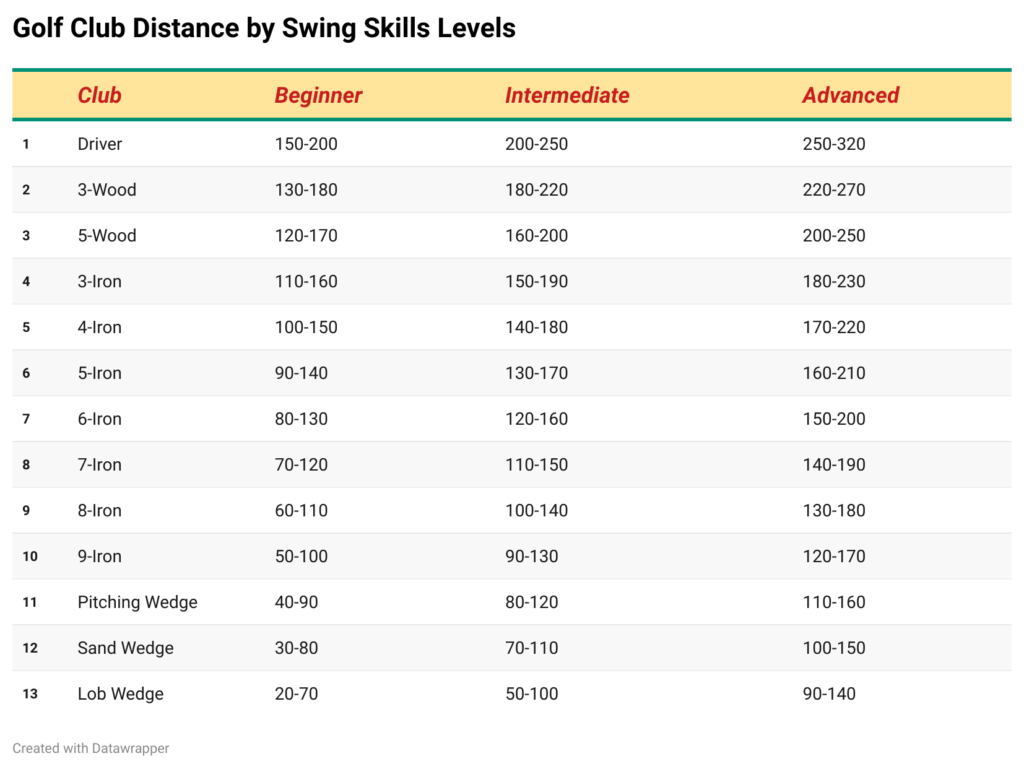
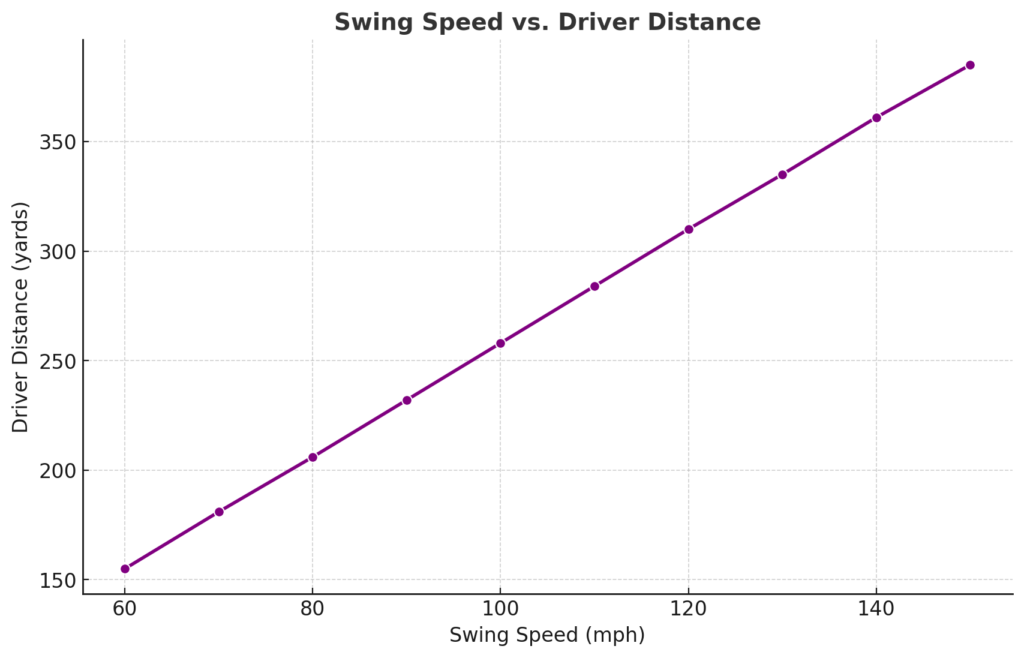
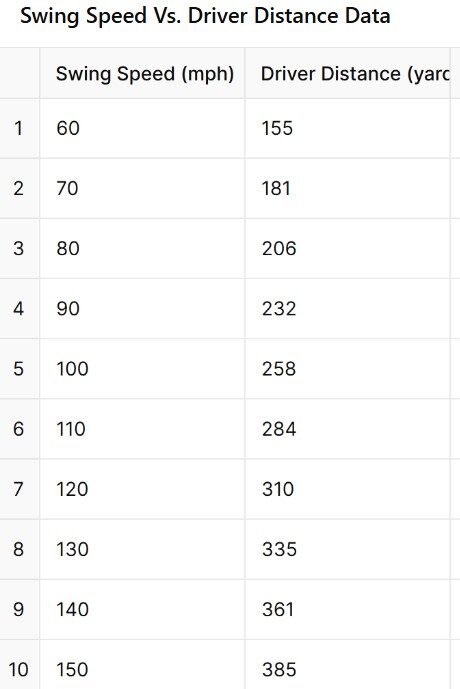
5. Smash Factor:
“Smash factor” is a way to measure how well energy moves from the club to the ball. The formula is as follows: clubhead speed divided by ball speed.
Smash Factor = Ball Speed / Clubhead Speed
Your smash factor, for instance, is 1.80 if you swing your driver at 100 mph and the ball is traveling at 180 mph.
A smash factor of 1.50 is considered the gold standard for drivers, meaning you’ve maximized energy transfer. Lower numbers suggest energy loss due to off-center strikes, poor contact, or inefficient swing mechanics.
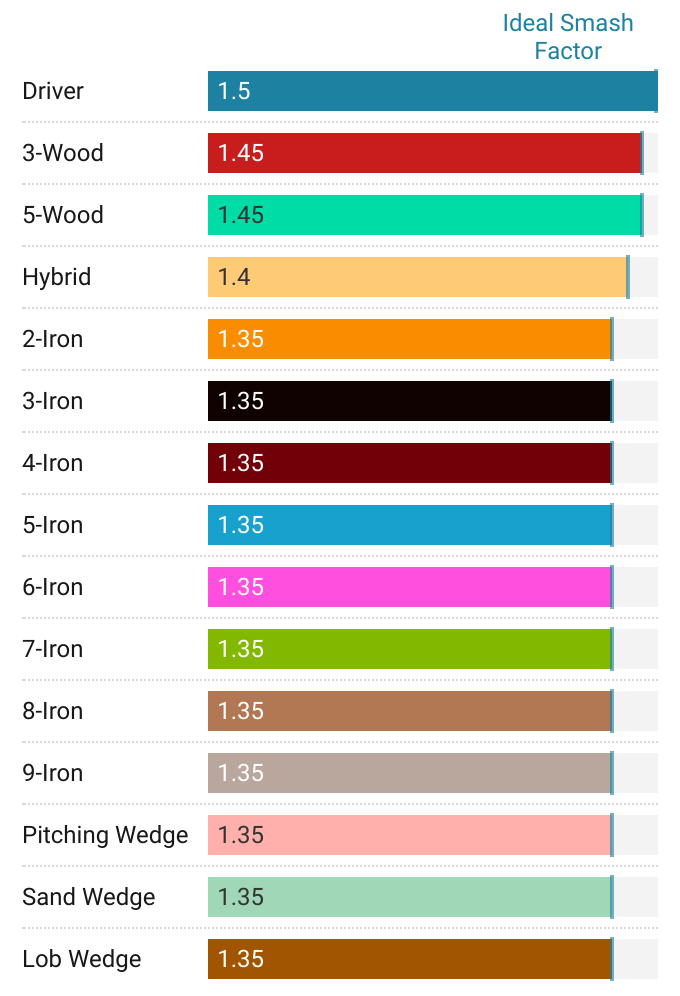
[Keep in mind that this is just an estimate. Personal differences, like your fitness level and swing technique, will affect your distance.]
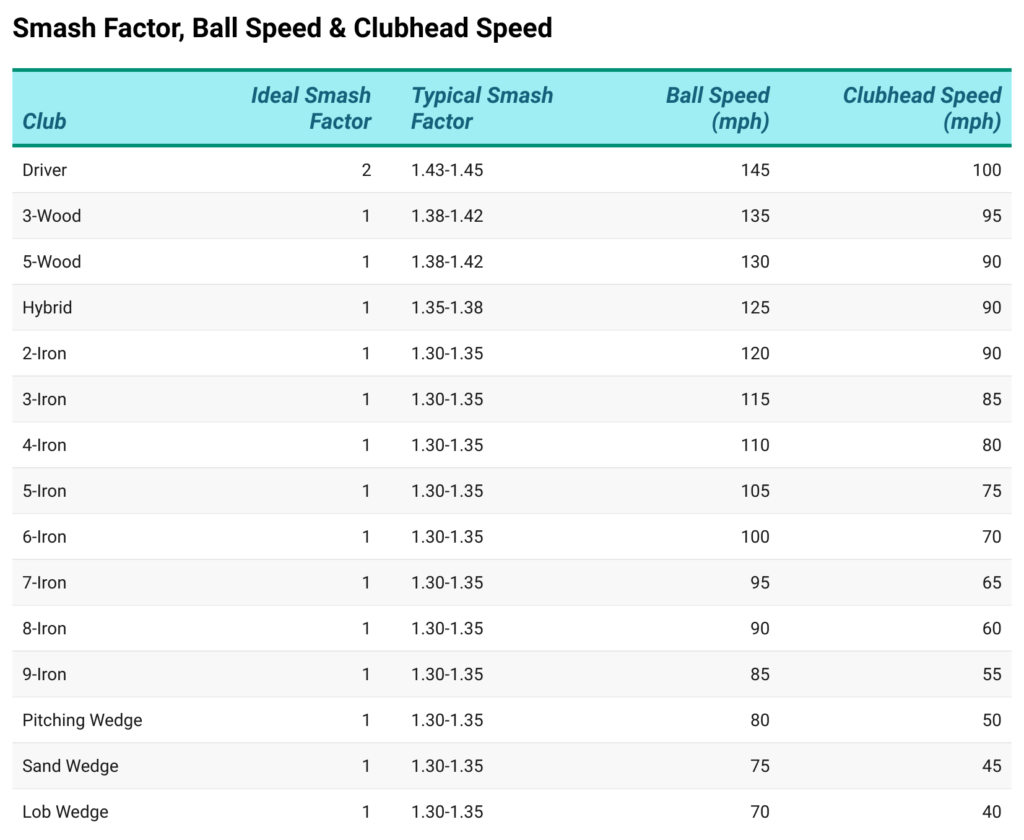
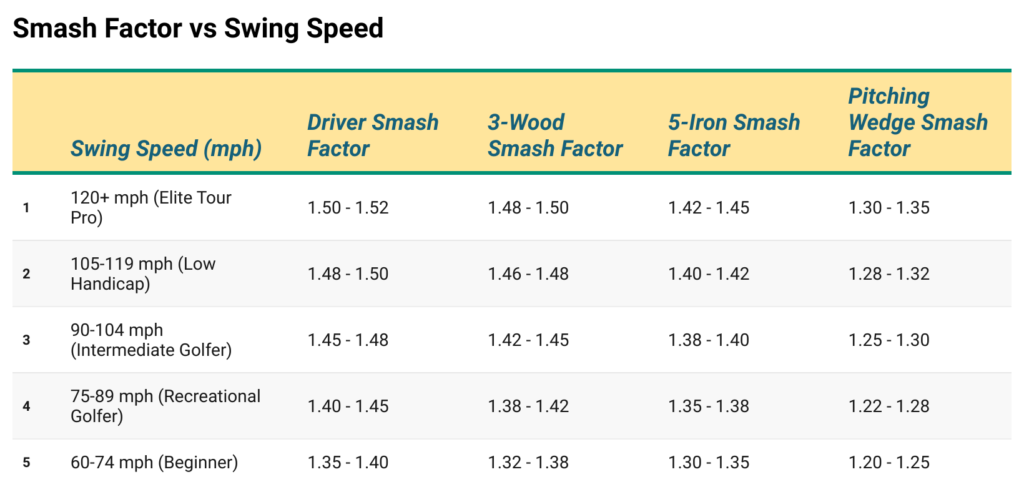
BEST PICKS FOR YOU
A Small Request for Our Readers

Hey amazing reader!
We know the ads can get a bit much sometimes, but they help keep this site alive and bring you the content you love. Your support means the world— thank you from the heart! 💙
Why Loft Matters
Trajectory: Loft controls the height of your shots. More loft means higher shots, less loft means lower shots.
Spin: Loft also affects how much spin you put on the ball. More loft generally means more spin, which can help with stopping power on the greens.
Distance: Loft influences how far the ball travels. Lower lofts typically result in longer distances, while higher lofts produce shorter distances.
Golf Club Lofts Chart – Compare Loft Angles
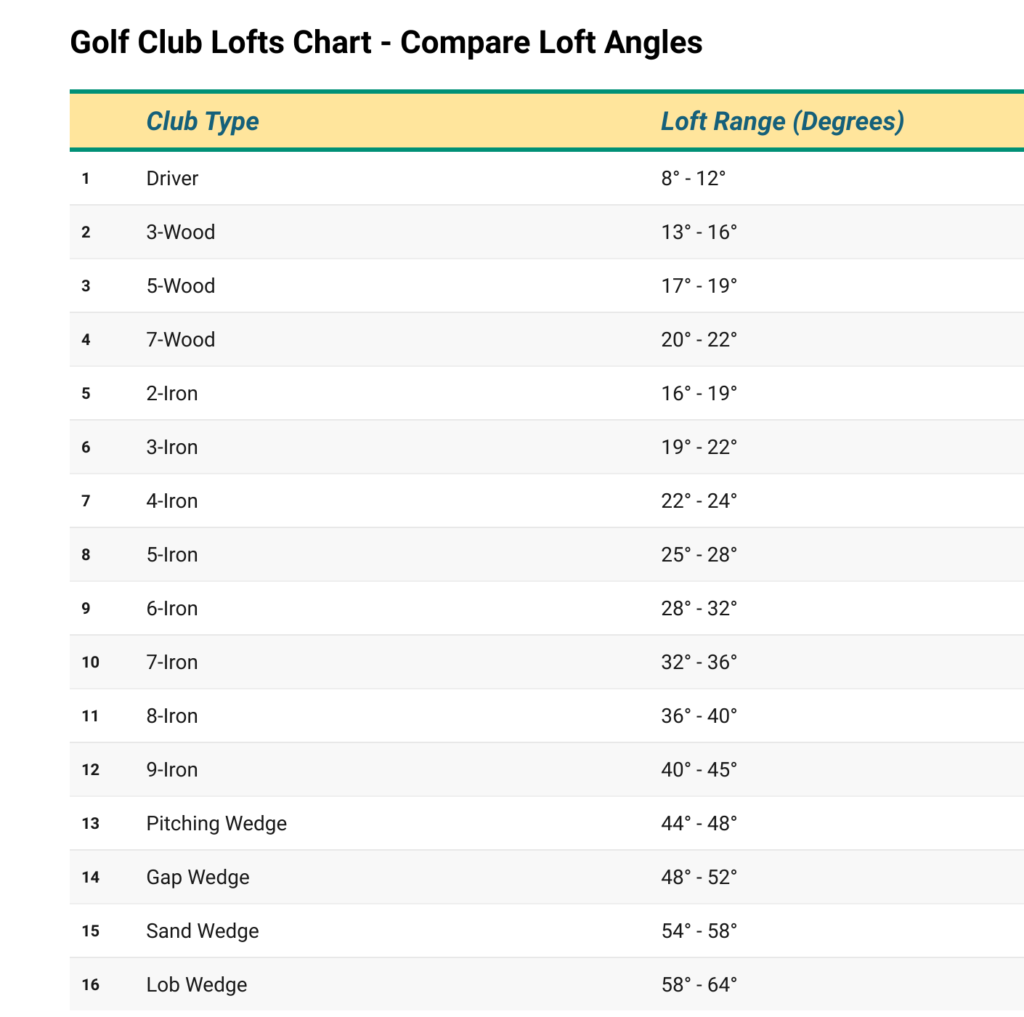
Golf Club Loft & Distance Chart (Yards)
Club Name | Loft Angle | Avg Distance (Yards) |
Driver | 8° – 12° | 230 – 290 |
3-Wood | 13° – 16° | 200 – 250 |
5-Wood | 17° – 19° | 180 – 230 |
3-Iron | 20° – 23° | 160 – 210 |
4-Iron | 23° – 26° | 150 – 200 |
5-Iron | 26° – 30° | 140 – 190 |
6-Iron | 30° – 32° | 130 – 180 |
7-Iron | 32° – 36° | 120 – 170 |
8-Iron | 36° – 40° | 110 – 160 |
9-Iron | 40° – 44° | 100 – 150 |
Pitching Wedge | 44° – 48° | 90 – 130 |
Gap Wedge | 50° – 52° | 80 – 120 |
Sand Wedge | 54° – 56° | 70 – 110 |
Lob Wedge | 58° – 64° | 50 – 90 |
What This Means for You:
- Modern irons hit farther because they have stronger lofts (lower degrees).
- If you switch from traditional irons to modern irons, expect a distance boost but lower ball flight.
- Loft gapping is crucial—make sure your clubs have consistent loft spacing to avoid distance overlaps.
A Traditional vs. Modern Loft Comparison Chart given below-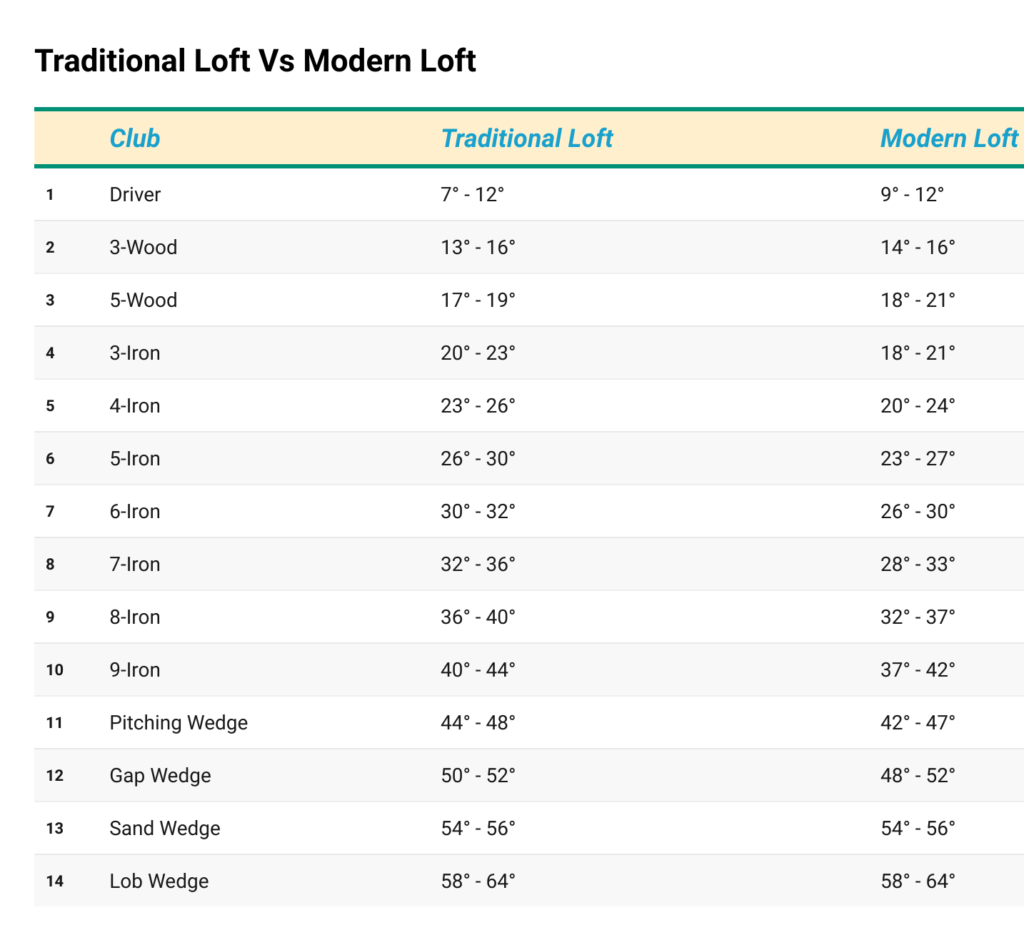
Tips for Choosing the Right Loft for Your Game
Choosing the right golf club loft is crucial for distance, accuracy, and control. Here’s how to pick the best loft for your game:

💡 Slower swings need more loft for lift; faster swings benefit from lower lofts for roll.
Consider Your Playing Style
✔️ Higher Loft → Higher Ball Flight (Best for soft greens, carry distance).
✔️ Lower Loft → Lower Ball Flight (Best for windy conditions, more roll).
Example: A high-lofted driver (12°) helps beginners get more height, while a lower loft (9°) suits fast swingers for better roll.
Hybrid Golf Club Lofts and Distance
Hybrid clubs have become increasingly popular among golfers, and for good reason! They offer a fantastic blend of the best features from both woods and irons, making them versatile tools for various situations on the course.
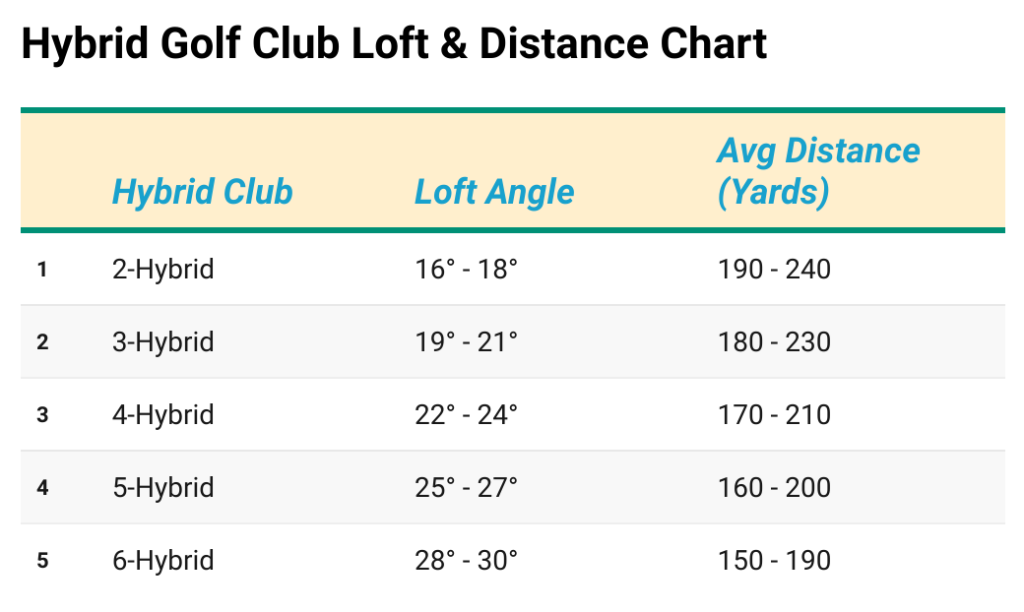
Callaway Golf Club Loft Chart:
Callaway is one of the most trusted golf brands, offering a range of lofts across drivers, fairway woods, hybrids, and irons. Here’s a quick look at Callaway’s typical loft configurations:
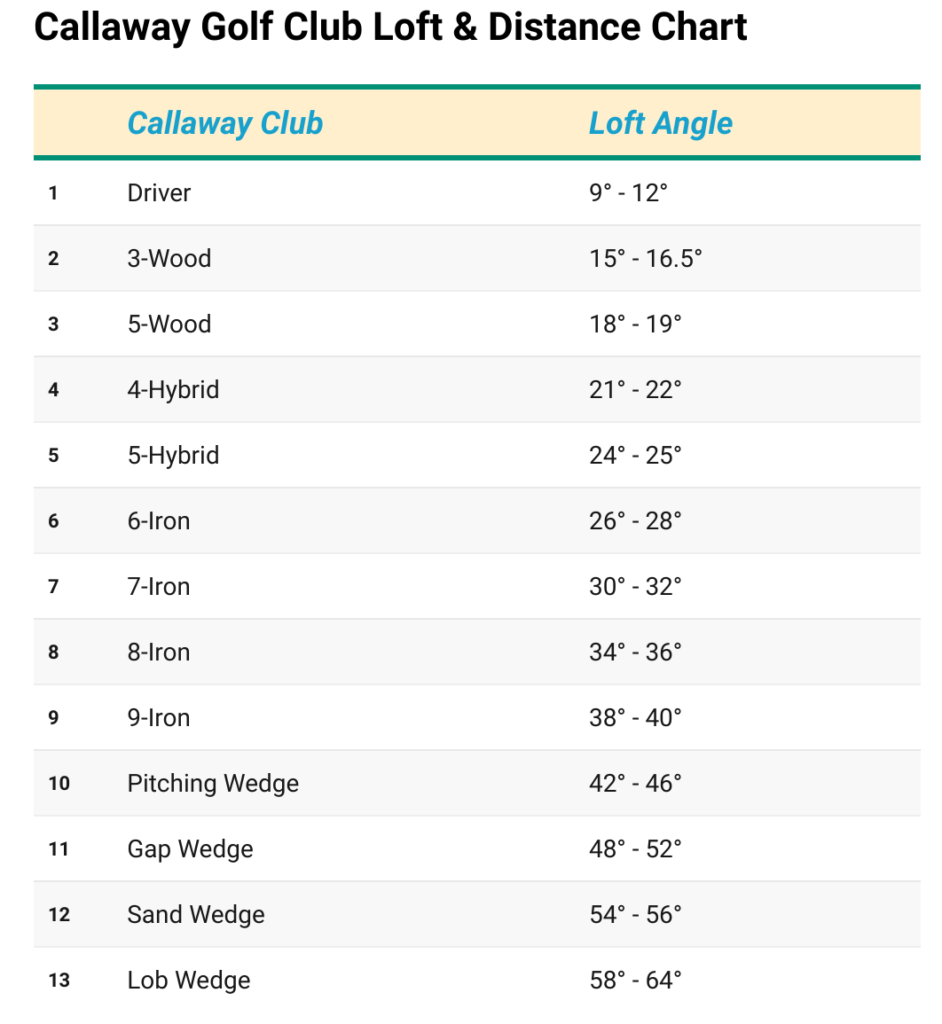
Common Mistakes Beginners Make With Loft
- Wrong Loft Usage: Not understanding how loft affects distance leads to inconsistent shots.
- Ignoring Distance Gaps: Failing to recognize distance differences between clubs can cause missed opportunities.
- Skipping Fitting: Not getting professionally fitted results in unsuitable clubs for your swing.
- Neglecting Adjustments: Overlooking loft adjustments on adjustable clubs can limit performance.
Golf Club Lofts and Distance Charts

Lower lofted clubs (e.g., driver, 3-wood) hit the ball farther with less spin. Higher lofted clubs (e.g., wedges) generate higher shots with more spin for control.

The average golf club distance in meters varies by club and skill level. A driver typically travels 180-270 meters, while a 7-iron averages 90-140 meters.

To maximize distance, use a low-lofted club like a driver or 3-wood. For approach shots, refer to a golf club lofts chart to select the right club based on your distance.

A golf club distance chart by age shows how distance varies with age. They help golfers select clubs that match their swing speed and strength.

A golf club distance chart by age helps golfers select the best clubs for their swing speed. Juniors and seniors often benefit from higher lofts for easier launch.

Use a loft and lie machine or a loft angle gauge to measure your club’s exact loft. Loft changes over time due to wear or adjustments.

You can use a golf club distance calculator or track distances manually by hitting multiple shots with each club and averaging the results.

The Callaway golf club loft chart lists the loft angles for each of their clubs. This helps golfers understand how each club will perform.

Hybrid golf club lofts typically range from 17 to 27 degrees. These lofts help achieve a higher launch and can improve distance for many players.

Typical golf club loft angles are:
-
- Drivers: 8-12 degrees
- Fairway Woods: 13-18 degrees
- Hybrids: 16-24 degrees
- Irons: 18-47 degrees
- Wedges: 48-60 degrees

